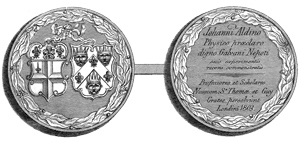AN ACCOUNT
OF
THE LATE IMPROVEMENTS
IN
GALVANISM,
WITH A SERIES OF CURIOUS AND INTERESTING
EXPERIMENTS
PERFORMED
BEFORE THE COMMISSIONERS OF THE FRENCH NATIONAL INSTITUTE,
AND REPEATED LATELY IN THE
ANATOMICAL THEATRES OF LONDON.
By JOHN ALDINI,
PROFESSOR OF EXPERIMENTAL PHILOSOPHY IN THE UNIVERSITY OF BOLOGNA, MEMBER OF THE MEDICAL AND GALVANICSOCIETIES OF PARIS, OF THE MEDICAL SOCIETY OF LONDON, ETC.
TO WHICH IS ADDED,
AN APPENDIX,
CONTAINING THE AUTHOR’S EXPERIMENTS
ON THE BODY OF A MALEFACTOR EXECUTED AT NEWGATE.
&c. &c.
ILLUSTRATED WITH ENGRAVINGS.

LONDON:
PRINTED FOR CUTHELL AND MARTIN, MIDDLE-ROW, HOLBORN,
AND J. MURRAY, NO. 32, FLEET-STREET,
BY WILKS AND TAYLOR, CHANCERY-LANE.
1803.
EDITOR’S PREFACE.
Few discoveries in modern times have excited somuch curiosity as that of Galvanism. Ever since itwas first made known by its celebrated Author, it hasengaged the attention of the most eminent philosophersin Europe; and various researches have been undertakento ascertain the principles on which it depends;and the laws to which it is subject.
Though some of its singular properties are fullyestablished, it must be allowed that the discovery isstill in its infancy; but enough of it is known to proveits importance, and to induce philosophers to continuetheir researches, which there is every reason to supposemay lead to some very curious results.
The experiments, indeed, which have already beenmade, seem to indicate that it may open a new field inthe healing art; and it appears by a late report presentedto the Class of the Exact Sciences of the Academyof Turin, that the medical application of it has beenattended with the most beneficial effects in a case ofconfirmed hydrophobia.
While Galvanism, independently of other advantages,holds out such hopes of utility in regard to objectsso interesting to mankind; a work containing afull account of the late improvements which have beenmade in it, illustrated by a complete course of experiments,cannot fail of being acceptable to the public ingeneral, and in particular to medical men, to whosedepartment, in one point of view, it more essentiallybelongs.
When Professor Aldini left this country, the manuscript,written in French, together with two printedLatin Dissertations, was put into the Editor’s hands,in order that they might be prepared for the press. Atranslation of these forms the principal part of thework: and an Appendix has been added, containingthe author’s experiments on the body of